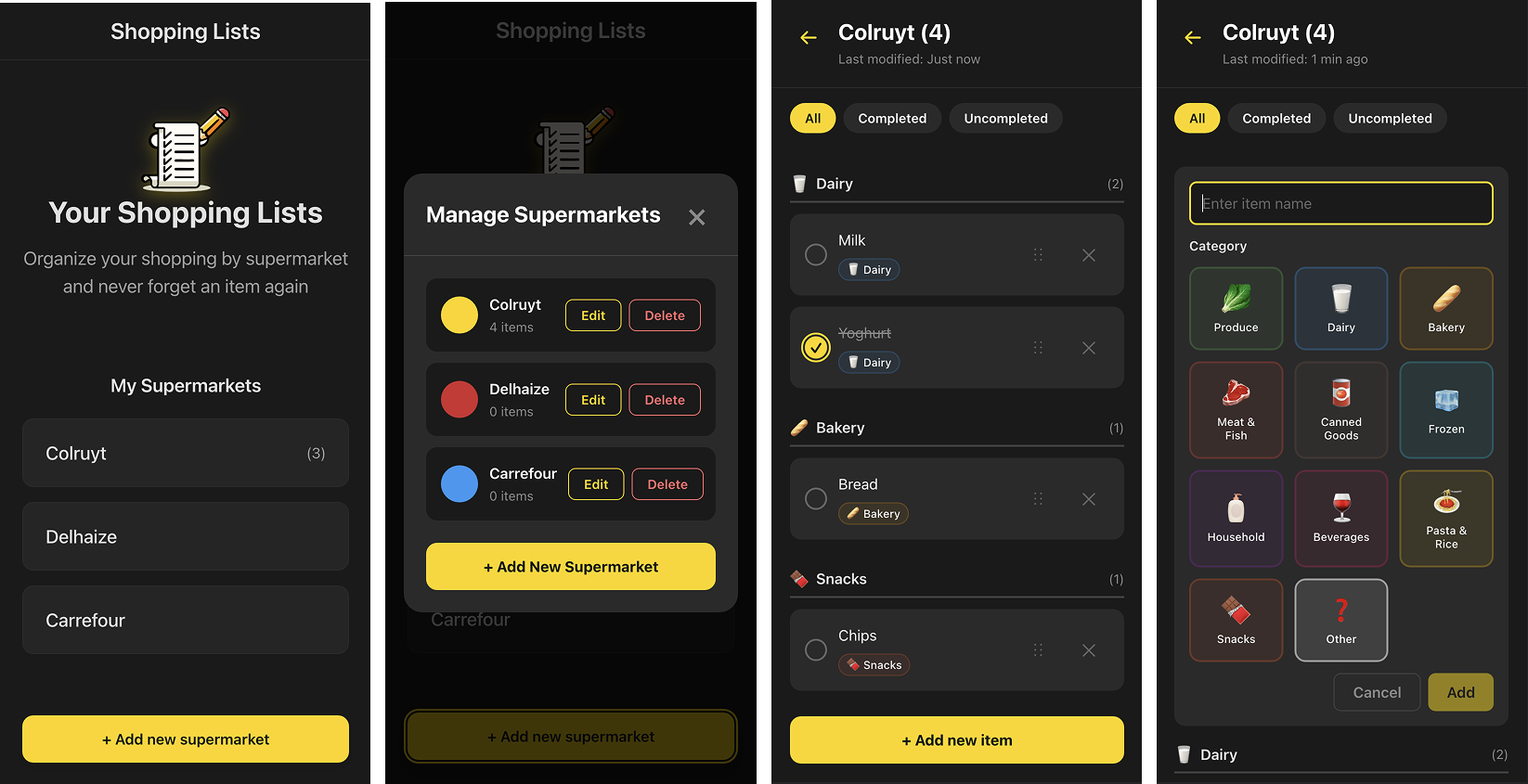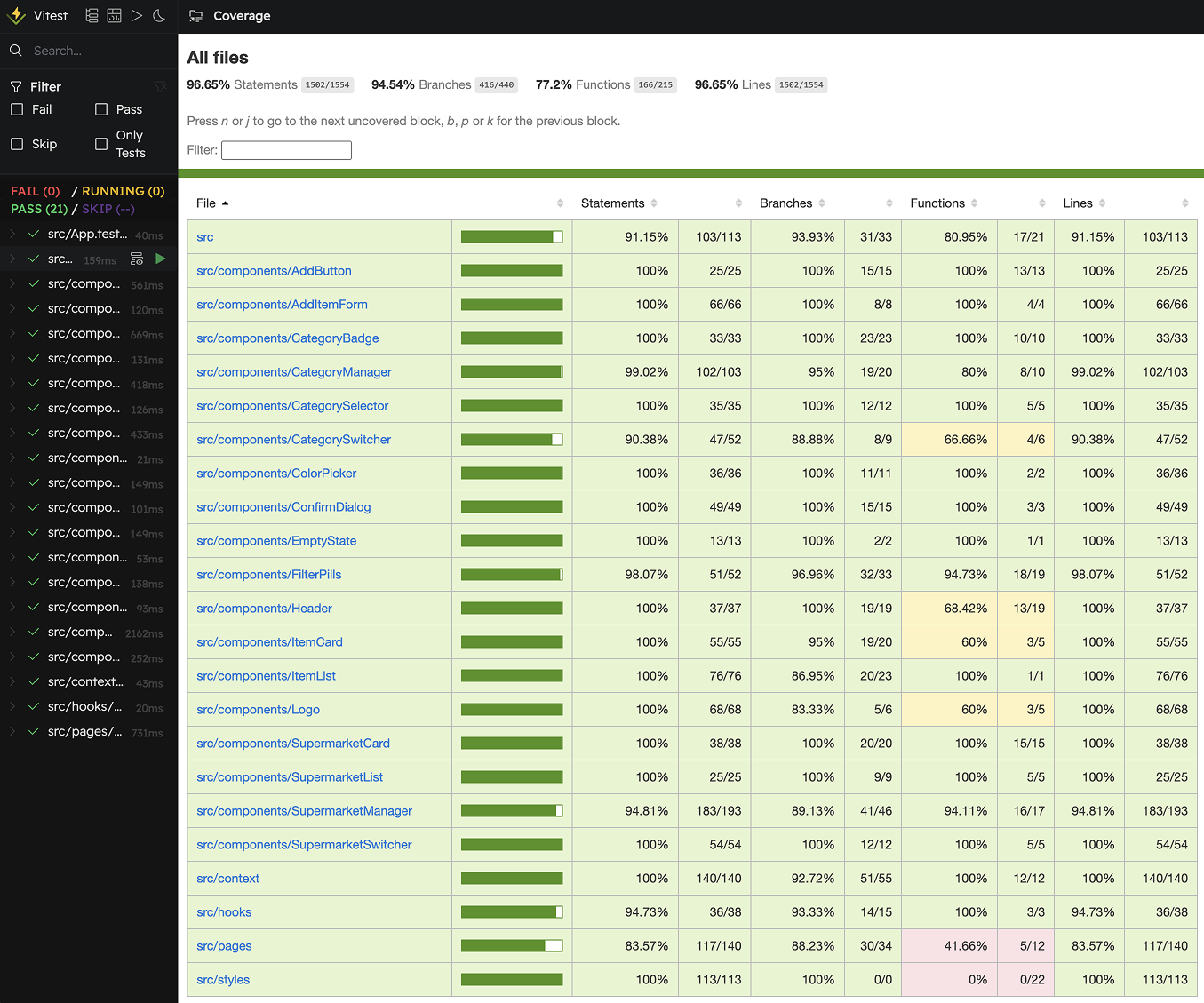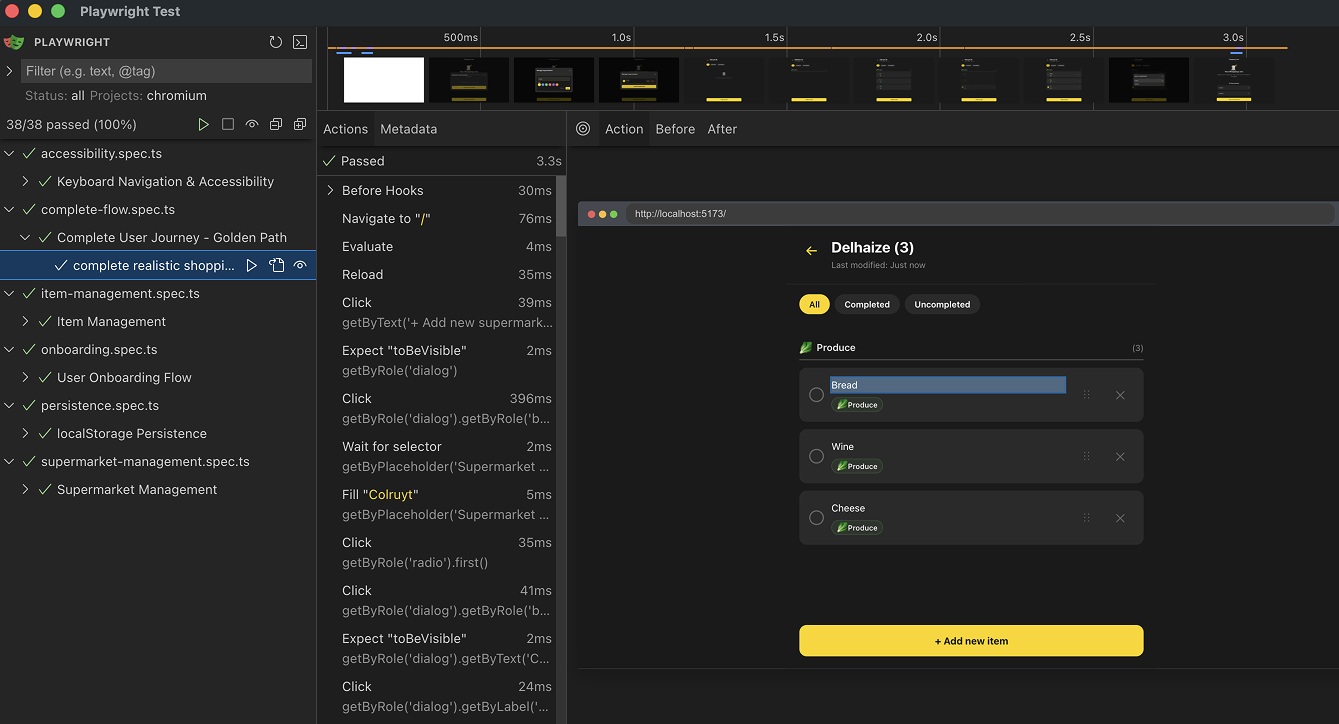Project Overview
This shopping list application represents a deep dive into modern React development, emphasizing test-driven development and production-ready code quality. Built from the ground up with testing as a first-class citizen, the project demonstrates how comprehensive testing strategies lead to maintainable, robust applications.
The application allows users to organize their shopping by supermarket, categorize items by store sections (Produce, Dairy, Bakery), and manage their lists with an intuitive dark-themed interface. But beyond the features, this project showcases a professional approach to React development with enterprise-level testing practices.



